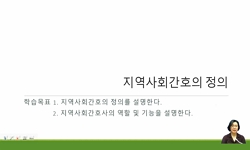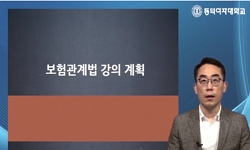Purpose: This study investigated the relationship between private dental insurance enrollment and dental care utilization in South Korea, focusing on how private insurance influences the intensity and frequency of dental service use. By exploring its ...
http://chineseinput.net/에서 pinyin(병음)방식으로 중국어를 변환할 수 있습니다.
변환된 중국어를 복사하여 사용하시면 됩니다.
- 中文 을 입력하시려면 zhongwen을 입력하시고 space를누르시면됩니다.
- 北京 을 입력하시려면 beijing을 입력하시고 space를 누르시면 됩니다.

민간치과의료보험 가입 여부에 따른 치과의료이용 영향: Two-Part Model 분석 = Association between private dental insurance enrollment and dental care utilization: A two-part model approach
한글로보기https://www.riss.kr/link?id=A109587177
- 저자
- 발행기관
- 학술지명
- 권호사항
-
발행연도
2025
-
작성언어
Korean
- 주제어
-
등재정보
KCI등재
-
자료형태
학술저널
- 발행기관 URL
-
수록면
24-36(13쪽)
- 제공처
-
0
상세조회 -
0
다운로드
부가정보
다국어 초록 (Multilingual Abstract)
Materials and Methods: Data from the second wave of the Korea Health Panel Survey (2019–2021) were analyzed for 11,196 adults aged 19 or older. A two-part model assessed dental care utilization; Part 1 analyzed utilization as a binary variable, and Part 2 examined expenditures and visit frequency. Private dental insurance enrollment was the primary independent variable, with adjustments for demographic, socioeconomic, and health-related factors.
Results: Private dental insurance enrollees were more likely to use dental care services than non-enrollees (31.3% vs. 23.5%, P<0.001), with higher odds of utilization (OR 1.50, 95% CI 1.18–1.89). Enrollees had higher total ex penditures (β 1.40, 95% CI 1.04–1.89) and costs per visit (β 1.55, 95% CI 1.19–2.01) but similar visit frequencies.
Subgroup analyses showed that men, urban residents, and older adults incurred higher expenditures.
Conclusion: Private dental insurance is associated with increased dental care utilization and expenditures but not visit frequency. Socioeconomic and demographic factors such as income, gender, and urban residency sig nificantly influence these patterns. These findings underscore private dental insurance’s potential to reduce financial barriers to care while highlighting persistent inequities that warrant targeted policy interventions.
Purpose: This study investigated the relationship between private dental insurance enrollment and dental care utilization in South Korea, focusing on how private insurance influences the intensity and frequency of dental service use. By exploring its role in alleviating financial burdens and addressing unmet needs, the findings aimed to inform strategies to enhance accessibility and equity in dental healthcare.
Materials and Methods: Data from the second wave of the Korea Health Panel Survey (2019–2021) were analyzed for 11,196 adults aged 19 or older. A two-part model assessed dental care utilization; Part 1 analyzed utilization as a binary variable, and Part 2 examined expenditures and visit frequency. Private dental insurance enrollment was the primary independent variable, with adjustments for demographic, socioeconomic, and health-related factors.
Results: Private dental insurance enrollees were more likely to use dental care services than non-enrollees (31.3% vs. 23.5%, P<0.001), with higher odds of utilization (OR 1.50, 95% CI 1.18–1.89). Enrollees had higher total ex penditures (β 1.40, 95% CI 1.04–1.89) and costs per visit (β 1.55, 95% CI 1.19–2.01) but similar visit frequencies.
Subgroup analyses showed that men, urban residents, and older adults incurred higher expenditures.
Conclusion: Private dental insurance is associated with increased dental care utilization and expenditures but not visit frequency. Socioeconomic and demographic factors such as income, gender, and urban residency sig nificantly influence these patterns. These findings underscore private dental insurance’s potential to reduce financial barriers to care while highlighting persistent inequities that warrant targeted policy interventions.
동일학술지(권/호) 다른 논문
-
- 대한치과의사협회
- 송민주
- 2025
- KCI등재
-
우식제거 과정에서 노출된 치수에 대한 치료방법 선택에 영향을 주는 요인에 대한 분석
- 대한치과의사협회
- 이진규
- 2025
- KCI등재
-
파노라마방사선영상에서 광범위하게 관찰된 두경부의 동맥석회화 증례
- 대한치과의사협회
- 최항문
- 2025
- KCI등재
-
- 대한치과의사협회
- 문호진
- 2025
- KCI등재




 DBpia
DBpia






